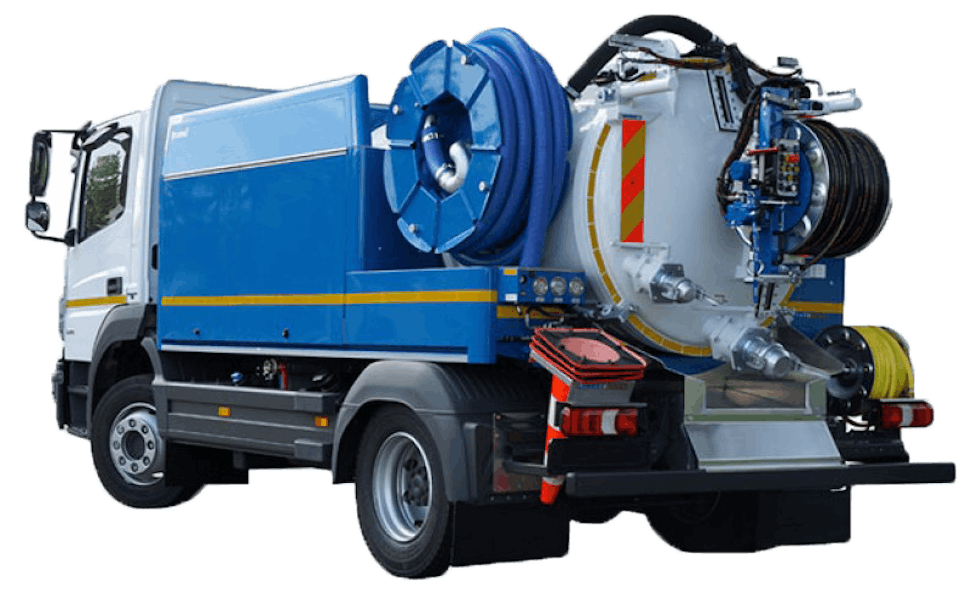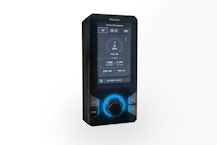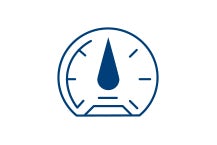- Guides
A Guide to Jetting and Vacuum (Jetvac) Combination Vehicles

Modern combination units are designed as multi-purpose, single resolution vehicles with the flexibility to tackle a wide variety of jobs.
Pump performance is crucial to the capabilities of a combination vehicle. As pump technology has evolved, smaller vehicles now offer the suction and jetting capacity comparable to much larger units.
For example, today’s smaller 7.5t vehicles may have suction capacities in the region of 1800 GPM and high-pressure jetting at around 2200 psi @ 22 GPM, more than enough to carry out the bulk of everyday drain and gully cleaning work. Advances also mean that contractors are increasingly switching operations to small combis, which offer cost savings in terms of initial outlay, fuel economy and the number of engineers needed on each job.
The smaller tank sizes of compact vehicles mean larger tankers still have advantages, though the latest emissions legislation make the use of these types of vehicles prohibitive in some areas.
Contents
- JETVAC VEHICLE FEATURES
- 4X4 COMBINATION VEHICLES
- VAN-MOUNTED JET VACS
- SMALL COMBINATION TANKERS
- LARGE COMBINATION TANKERS
1. JETVAC VEHICLE FEATURES
Modern smaller jetvac units offer a versatile alternative to large vacuum tankers, particularly when used in congested cities or confined areas.
The latest jetvac combination units have been designed to meet ULEZ (ultra-low emission zones) standards for use in cities across Europe. Utilising PTO (Power Take-Off) from the vehicle’s emissions-compliant engine to power the twin pumps for jetting and suction, the units can be operated by a single person by way of sophisticated remote control and pump management systems.

5. REMOTE CONTROLThe latest dual-band remote control kits utilise FHSS technology for a 30-40% improvement on reception range, which is beneficial in densely populated areas 6. WATER TANKPartitioned water tanks that carry both waste and clean water are common. A typical configuration may be 2000 litres waste and 1000 litres clean water. 7. STORAGESingle-resolution visits may require the use of multiple tools, such as drain rods and CCTV cameras. Ample storage space enables the additional kit to be carried. 8. LIGHTINGAlongside warning and storage lighting, exterior LED lights along both sides of the vehicle can be switched independently for highlighting the working area. |
VIEW THE RIOCOM SPECIFICATION

2. 4X4 COMBINATION VEHICLES
Compact jetvac units mounted on a 4x4 chassis are a relatively new addition to the jetvac family. Developed for work in height-restricted spaces such as underground car parks, they are also well suited for use in difficult terrain and rural areas thanks to the 4x4 capability. Featuring a high-pressure and a vacuum pump, they can be used for demanding jetting tasks and to empty wet wells or grease traps.
TYPICAL FEATURES
- Perfectly suited for car parks
- Driven without an HGV license
- 4-wheel drive for hard terrain
- Powerful high-pressure jetting and suction pump
VIEW THE URBANCOMBI SPECIFICATION

3. VAN-MOUNTED COMBINATION UNITS
Van-mounted jetting/vacuum units are ideally suited for use in environments subject to harsh weather conditions as the equipment and water tanks are protected within the vehicle. These types of jetvacs can be installed in larger 5-tonne commercial vans and used in narrow streets and other difficult-to-reach places for year-round clearing of flooded cellars, grease traps and heavily polluted drains. The units typically include 800ltr clean and wastewater tanks constructed from lightweight materials.
TYPICAL FEATURES
- Built-in to withstand harsh winters
- Installed in 5-tonne vehicles
- Clean and wastewater tanks
- Lightweight construction to reduce overall vehicle weight

4. SMALL COMBINATION TANKERS
As with 4x4 units, these types of jetvac combis can be driven without an HGV license. Typically built on either a 4.5t or 7.5t chassis, they are ideal for use in low-emission zones and congested areas such as city centres and suited to a wide range of commercial and domestic drainage tasks. Alongside powerful jetting and vacuum capacities, they often feature partitioned water tanks for both clean and wastewater.
TYPICAL FEATURES
- Pivoting hose reel
- Unit can be mounted on a range of chassis from 4.5t upwards
- Radio remote control
- Partitioned water tanks
VIEW THE UNICOM SPECIFICATION

5. LARGE COMBINATION TANKERS
Larger tankers have the advantage of being able to carry and remove more water. Ranging in size from 10t up to 25t and above, these types of jetvacs can carry between 3500 to 12500lts of clean or wastewater with the ability to work in pipe diameters up to 600mm. Advanced features include hydraulically adjustable tank partitions, remote control systems and pivoting high-pressure hose reel configurations.
TYPICAL FEATURES
- Range of vehicle size and weight, typically 7.5, 10 or 12 tonnes
- Hydraulically adjustable partitions
- Available with liquid-ring pumps
- Radio remote control
VIEW THE FLEXCOM SPECIFICATION
- Guides












